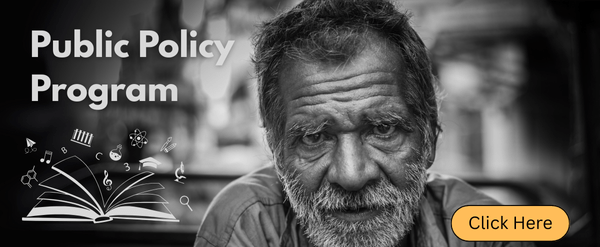Guidelines
IISPPR Editorial Guidelines
1. Purpose and Audience
Objective
- Clearly define the purpose of your content. Is it to inform, entertain, persuade, or educate?
Target Audience
- Understand and define your audience. Tailor the tone, style, and complexity of your content to suit their preferences and needs.
2.Content Quality
Accuracy
- Ensure all information is accurate and up-to-date. Fact-check all statements and use reliable sources.
Clarity
- Write in a clear and concise manner. Avoid jargon unless necessary, and provide explanations for complex terms.
Engagement
- Create engaging content that captivates the reader. Use storytelling, examples, and questions to maintain interest.
3. Structure and Format
Headlines and Subheadings
- Use clear, informative headlines and subheadings to break up the text and guide the reader.
Paragraphs
- Keep paragraphs short (3-4 sentences). Each paragraph should contain a single idea or point.
Lists
- Use bullet points or numbered lists to organize information and make it easily digestible.
4. Tone and Style
Consistency
- Maintain a consistent tone and style throughout the content. Refer to the IISPPR style guide for specifics.
Voice
- Decide whether the content will be formal, informal, conversational, or authoritative, and stick to it.
Inclusivity
- Use inclusive language that respects all readers. Avoid stereotypes and biased language.
5. Grammar and Punctuation
Grammar
- Follow standard grammar rules. Use tools like Grammarly to check for errors.
Punctuation
- Use correct punctuation to ensure clarity and readability.
Spelling
- Use consistent spelling, preferably following a specific dictionary (e.g., American or British English).
6. Citations and References
Attribution
- Properly attribute all quotes, data, and information sourced from others. Use a consistent citation style ( APA7 Only).
Hyperlinks
- Link to credible sources when referencing external information. Ensure links are up-to-date and functional.
7. Visual Content
Images and Graphics:
- Use high-quality images and graphics. Ensure they are relevant and add value to the content.
Captions
- Provide captions for images and graphics. Use alt text for accessibility.
Credit
- Properly credit the source of images and graphics if they are not original.
8. Editing and Proofreading
Review Process
- Implement a review process where multiple people check the content for errors and quality.
Feedback
- Be open to feedback and make necessary revisions. Encourage constructive criticism.
Credit
- Properly credit the source of images and graphics if they are not original.
9. Ethical Considerations
Plagiarism
- Ensure all content is original. Do not copy others’ work without proper attribution.
Transparency
- Be transparent about any conflicts of interest or biases.
Privacy
- Respect the privacy of individuals. Do not include personal information without consent.
10. Compliance
Legal Requirements
- Ensure content complies with all relevant laws and regulations.
Submission Guidelines For Article
Article Length
- Well-researched analytical pieces in about 1000 words, with a heading, appropriate subheadings, and a brief abstract. This is subject to change per “Editorial” or “SEO – Search Engine Optimization” requirements.
Grammar and Plagiarism Checks
- Contributors are advised to only send cleaned articles after running usual grammar checks and checking for plagiarism using the latest software.
IISPPR Editorial Guidelines
1. Purpose and Audience
Objective
- Clearly define the purpose of your content. Is it to inform, entertain, persuade, or educate?
Target Audience
- Understand and define your audience. Tailor the tone, style, and complexity of your content to suit their preferences and needs.
2.Content Quality
Accuracy
- Ensure all information is accurate and up-to-date. Fact-check all statements and use reliable sources.
Clarity
- Write in a clear and concise manner. Avoid jargon unless necessary, and provide explanations for complex terms.
Engagement
- Create engaging content that captivates the reader. Use storytelling, examples, and questions to maintain interest.
3. Structure and Format
Headlines and Subheadings
- Use clear, informative headlines and subheadings to break up the text and guide the reader.
Paragraphs
- Keep paragraphs short (3-4 sentences). Each paragraph should contain a single idea or point.
Lists
- Use bullet points or numbered lists to organize information and make it easily digestible.
4. Tone and Style
Consistency
- Maintain a consistent tone and style throughout the content. Refer to the IISPPR style guide for specifics.
Voice
- Decide whether the content will be formal, informal, conversational, or authoritative, and stick to it.
Inclusivity
- Use inclusive language that respects all readers. Avoid stereotypes and biased language.
5. Grammar and Punctuation
Grammar
- Follow standard grammar rules. Use tools like Grammarly to check for errors.
Punctuation
- Use correct punctuation to ensure clarity and readability.
Spelling
- Use consistent spelling, preferably following a specific dictionary (e.g., American or British English).
6. Citations and References
Attribution
- Properly attribute all quotes, data, and information sourced from others. Use a consistent citation style ( APA7 Only).
Hyperlinks
- Link to credible sources when referencing external information. Ensure links are up-to-date and functional.
7. Visual Content
Images and Graphics:
- Use high-quality images and graphics. Ensure they are relevant and add value to the content.
Captions
- Provide captions for images and graphics. Use alt text for accessibility.
Credit
- Properly credit the source of images and graphics if they are not original.
8. Editing and Proofreading
Review Process
- Implement a review process where multiple people check the content for errors and quality.
Feedback
- Be open to feedback and make necessary revisions. Encourage constructive criticism.
Credit
- Properly credit the source of images and graphics if they are not original.
9. Ethical Considerations
Plagiarism
- Ensure all content is original. Do not copy others’ work without proper attribution.
Transparency
- Be transparent about any conflicts of interest or biases.
Privacy
- Respect the privacy of individuals. Do not include personal information without consent.
10. Compliance
Legal Requirements
- Ensure content complies with all relevant laws and regulations.
Submission Guidelines For Article
Article Length
- Well-researched analytical pieces in about 1000 words, with a heading, appropriate subheadings, and a brief abstract. This is subject to change per “Editorial” or “SEO – Search Engine Optimization” requirements.
Grammar and Plagiarism Checks
- Contributors are advised to only send cleaned articles after running usual grammar checks and checking for plagiarism using the latest software.

